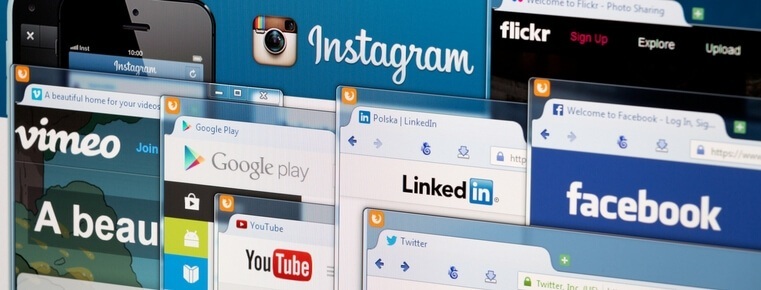Top 5 Most Effective Content Marketing Strategies
Content marketing is expected to grow in the coming years. More than just being important, content is becoming an essential aspect of online marketing. Just look at today’s SEO, which looks more like a specific type of content marketing than link building. If the marketer focuses on context instead of back links, he’ll drive real traffic to his site and Google will reward him with high organic rankings. As such, your on-page SEO agency should follow this line of thought as well.
According to a study, 90% of consumers find custom content useful and 78% believe that organizations providing custom content are interested in building good relationships with them. Research also shows that leads generated through effective content marketing are more likely to become loyal customers and brand champions. In a recent study from CopyPress, more marketers are allotting bigger budget for content marketing this year, as compared to last year.
Content is the voice of your brand. Sometimes, it becomes the reflection of your values and beliefs as a company. Here, I provide five content marketing techniques to help bring out the strength of your brand, drive consumer engagement, and encourage more people to do business with you.
Know who your market is and where you can best reach them
Effective content marketing isn’t always about attracting a huge pool of audience. The key strategy is engaging the right audience continuously. A lot of brands set their sights solely on producing viral content, aiming for the most number of likes on Facebook or the maximum views on YouTube. Often, in an attempt to make something viral we forget to pay attention to the usefulness of the content to our desired target market.
Here are 5 things to help you determine your target audience:
- Profile your existing customer base
- Find out the type of market your competitors are servicing
- Evaluate who benefits the most from your product or service
- Identify your market segments
- Write down all relevant demographics and psychographics of your target market
The more you know about the people you want to engage with, the better the chance of starting a conversation with them that could eventually lead to a mutually beneficial relationship. When you have something insightful to say about something that interests your target market, you gain steam as an authority and eventually become a credible resource on such topics.
Tell your story via different formats and platforms
You don’t have full control of where or how consumers encounter your brand. The best you can do is make sure your messaging is consistent across all channels. Your target audience could be similar in many ways, but the manner they communicate could be as diverse as their individual personalities.
One good advice comes from Tommy Walker of Marketingprofs.com – if you wouldn’t go to a black tie event in ripped jeans and shirt, then don’t’ let your content get caught the same way everywhere you publish it.
One strategy you can use to heighten consumer awareness and drive them directly to your site is by pushing content via paid, owned, and earned media. The report from Jeremiah Owyang and Rebecca Lieb provides a simple illustration that defines paid, owned and earned media at best:
- Owned media consists of any type of content and media that is owned by your organization. These include your websites, company blog, webinar presentations, and social media profile pages like your company’s Twitter account, Facebook Page, or Linkedin account. So let’s say, for instance, you belong to a wellness company and you created an interesting article that talks about cancer risks. You can highlight the part with some statistics on it and use it as trivia for your Twitter account. Tweak your post and highlight that cancer is stress-related, and make the article appeal to workaholic professionals on Linkedin. When you share the same story on Facebook, get a visually stimulating image so it could grab more attention when shown on news feed.
- Paid Media, on the other hand, is any marketing strategy you pay for, such as online ads, paid search, traditional ads, or sponsorships. A lot of brand and marketing managers consider Promoted Tweets, Facebook Ads, Retargeting Ads, StumbleUpon Paid Discovery and Reddit Ads very effective.
- Earned Media is like word of mouth where consumers become the channels of your message. Traditionally, earned media is the favorable publicity a brand receives through news articles and editorial. In the advent of web 2.0, earned media now includes guest blog posts, social media comments, online reviews and ratings systems, and other forms of user generated content (UGC).
Here’s a quick summary of the three forms of media which highlights their advantages and disadvantages. In my opinion, it takes sheer mastery of earned and owned media to stand out in today’s competitive online market.
Give FREE stuff, and get FREE customers in return
Everyone loves everything that’s useful and free of charge. Smart brands nowadays are starting to provide free eBooks in exchange for filling out a contact form. Retail companies offer free coupons whenever customers sign up for a newsletter subscription.
Such types of free content serve brands in two ways: it provides relevant content that brings value to customers and this, in turn, helps brands win the customer’s business. Ebooks and newsletters make for great content marketing tools because they don’t look like an advertising medium at all. Marketers can easily dictate the information they want to put in an eBook or a newsletter, steer the tone to make it sound like an informative piece of material, and it only requires minimal investment to produce.
An eBook can be static (think of the usual ebooks you read from Kindle), enhanced (offers improved interactivity by embedding photos and videos), or interactive (uses three dimensional diagrams, interactive infographics, animation, and a lot more tricks to deliver an awesome reading experience).
Interactive ebooks take time to produce, but if you want to go the extra mile and give out this kind of ebook for free, Clare McDermott of Contentmarketinginstitute.com highlights some fantastic eBooks you can use as inspiration:
Do or Die discusses the decline of traditional advertising and marketing, and provides tips on how to survive in an age of rapid technological advancements.
What makes it interesting: It highlights eight case studies of brilliant brands like Nike, Virgin America, and Vail Resorts which have successful made the most out of this digital shift. It provides hyperlinked video interviews with the likes of Shiv Singh from PepsiCo and Carol Kruse of ESPN, and enables readers to comment in realtime while reviewing other people’s opinion of the book.
Bestselling author Joseph Michelli takes readers to the amazing company culture of Zappos, the out-of-the-box organization whose brand is synonymous to excellent customer service, hassle-free online shopping experience, and impressive transformational business success.
What makes it interesting: There are 17 QR codes throughout the book that link to digital content, including an epic Nerf battle at Zappos headquarters. Check out the “Do Not Click Here” QR code on page 90!
Tap the combined power of social media and online video content marketing
According to a report released by Outbrain last year, 87% of brand and agency marketers in the U.S. prefer video content over other types of content, making it the most popular medium.
In the same study, 89% of marketers rank social media engagement as the most popular factor they use to measure the success of their content marketing efforts.
But before you immerse your brand in a busy, noisy world of YouTube nation, remember that online video content marketing takes more than just uploading videos on YouTube. As a marketer, you have to make sure that you’ve made all the steps necessary to evaluate if online video marketing is appropriate for your brand.
In a YouTube video study of Top 100 brands, Rob Ciampa and his team at Pixability discovered four critical elements of an effective video content marketing strategy on YouTube:
- Create lots of good, assorted videos without overspending.The study has found that the top YouTube marketers produce an average of 181 videos, while the bottom had only 29. One example of a brand that successfully leverage video is Nintendo, which not only produces great content, but creates lots of video variations that give users a reason to keep coming back.
- Integrate YouTube and web content.On top of creating YouTube channels, the research shows that brands like Coca-Cola and Toyota are embedding YouTube videos on their company websites. This strategy helps get the content in front of more eyes and since YouTube is part of Google, it will help your website rank better in search results.
- Engage your community with YouTube. More than just an online video repository, YouTube is also a potent social media platform. Use it to stir engagement, drive more views and shares.Picv10Take the case of Old Spice, which generated video content according to the feedback it got from its YouTube community.
- Embrace YouTube Advertising.Paid media is a critical part of effective video content marketing. According to Rob,YouTube advertising can deliver 10 times the click-through rates when compared with traditional AdWords and video ad networks.
Create branded content
Think of this strategy as a means to effectively promote your brand without the hard-sell pitching. After all, you’re not just selling product or services. You’re also promoting your passion, values, and entire company culture every time you get the chance – so might as well show it off in an engaging way.
Here are some samples of branded content that won the hearts of many, without overtly bragging about themselves:
- Toshiba Intel, The Beauty Inside – The Beauty Inside follows the story of alex, who wakes up every day with a different physical appearance. This campaign successfully puts the audience experience first by giving fans a chance to audition for Alex’s role, since his look changes daily. Alex interacted with Facebook fans and the fans had the opportunity to take Alex’s role.The social film didn’t talk about computers. It simply highlighted the core message: what’s inside counts. And this is what helped Toshiba Intel garner millions of views.
- Expedia, Find Yours – Well known travel site Expedia created several impactful videos that tell stories of emotional journeys. Instead of selling plane tickets right away, Expedia associated its brand to purely positive feelings. It went beyond selling vacations; it highlighted the wonders of emotional connection that people get each time they travel.
- IBM, Why IBM Works – To attract the best and the brightest employees globally, IBM needed to highlight that it’s an equal opportunity employer which hires the best talent regardless of race, age, sex, religion, and more. The video is simple, yet it showcased the diversity of the company’s culture thus attracting high potential talent from all parts of the world to consider IBM above other organizations.
You don’t need to limit yourselves on creating videos. A growing number of companies use infographics, a slideshow of photos with captions, and some even dedicate an entire page on their websites to subtly highlight the strengths and uniqueness of their companies.
Present your company like an interesting person would introduce himself at a cocktail party. Instead of bragging, you try to discover common interests, you present yourself the best way you can, and seize the opportunity to connect with people who share your passion and values. In the age of social media, it’s so much easier to attract more people to your brand just because they like you.
Don’t stop at one medium. Branded content should be part of a larger marketing effort that could extend in your blogs, social media pages, websites, and more.







